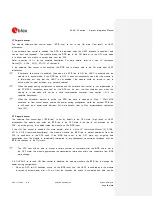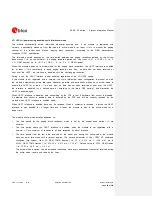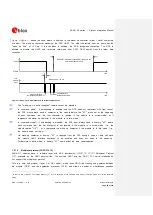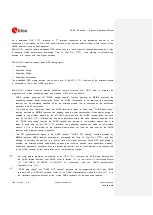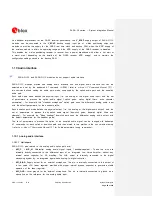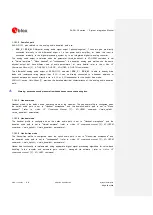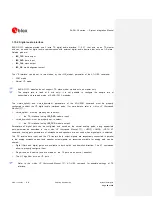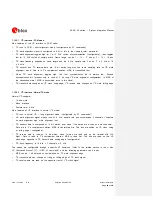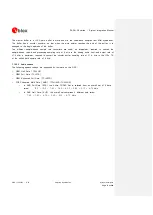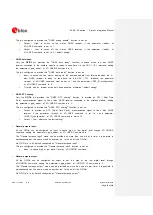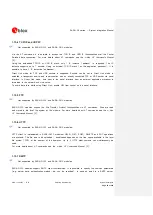
SARA-G3 series - System Integration Manual
UBX-13000995 - R06
Objective Specification
System description
Page 64 of 218
via a dedicated DDC (I
2
C) interface. A 2
nd
interface connected to the positioning receiver is not
necessary: AT commands via the UART serial interface of the wireless module allows a fully control of the
GNSS receiver from any host processor.
SARA-G350 modules feature embedded GPS aiding that is a set of specific features developed by u-blox
to enhance GNSS performance, decreasing Time To First Fix (TTFF), thus allowing to calculate the
position in a shorter time with higher accuracy.
SARA-G350 modules support these GPS aiding types:
Local aiding
AssistNow Online
AssistNow Offline
AssistNow Autonomous
The embedded GPS aiding features can be used only if the DDC (I
2
C) interface of the wireless module
is connected to the u-blox GNSS receivers.
SARA-G350 wireless modules provide additional custom functions over GPIO pins to improve the
integration with u-blox positioning chips and modules. GPIO pins can handle:
GNSS receiver power-on/off: “GNSS supply enable” function provided by
GPIO2
improves the
positioning receiver power consumption. When the GNSS functionality is not required, the positioning
receiver can be completely switched off by the wireless module that is controlled by the application
processor with AT commands
The wake up from idle-mode when the GNSS receiver is ready to send data: “GNSS data ready”
function provided by
GPIO3
improves the wireless module power consumption. When power saving is
enabled in the wireless module by the AT+UPSV command and the GNSS receiver does not send
data by the DDC (I
2
C) interface, the module automatically enters idle-mode whenever possible. With
the “GNSS data ready” function the GNSS receiver can indicate to the wireless module that it is
ready to send data by the DDC (I
2
C) interface: the positioning receiver can wake up the wireless
module if it is in idle-mode, so the wireless module does not lose the data sent by the GNSS
receiver even if power saving is enabled
The RTC synchronization signal to the GNSS receiver: “GNSS RTC sharing” function provided by
GPIO4
improves GNSS receiver performance, decreasing the Time To First Fix (TTFF), and thus
allowing to calculate the position in a shorter time with higher accuracy. When GPS local aiding is
enabled, the wireless module automatically uploads data such as position, time, ephemeris, almanac,
health and ionospheric parameter from the positioning receiver into its local memory, and restores this
to the GNSS receiver at the next power up of the positioning receiver
For more details regarding the handling of the DDC (I
2
C) interface, the GPS aiding features and
the GNSS related functions over GPIOs, refer to section 1.11, to the
u-blox AT Commands Manual
[2] (AT+UGPS, AT+UGPRF, AT+UGPIOC AT commands) and the
GNSS Implementation
Application Note [21].
“GNSS data ready” and “GNSS RTC sharing” functions are not supported by all u-blox GNSS
receivers HW or ROM/FW versions. Refer to the
GNSS Implementation Application Note [21] or to
the
Hardware Integration Manual of the u-blox GNSS receivers for the supported features.



